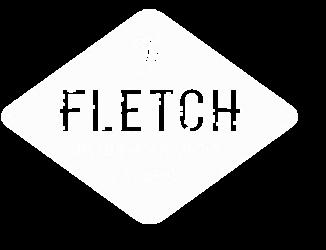FOOD + BEVERAGE
KONA'S SUSHI JEWEL
LIFE + CULTURE
EATING OUR ROOTS
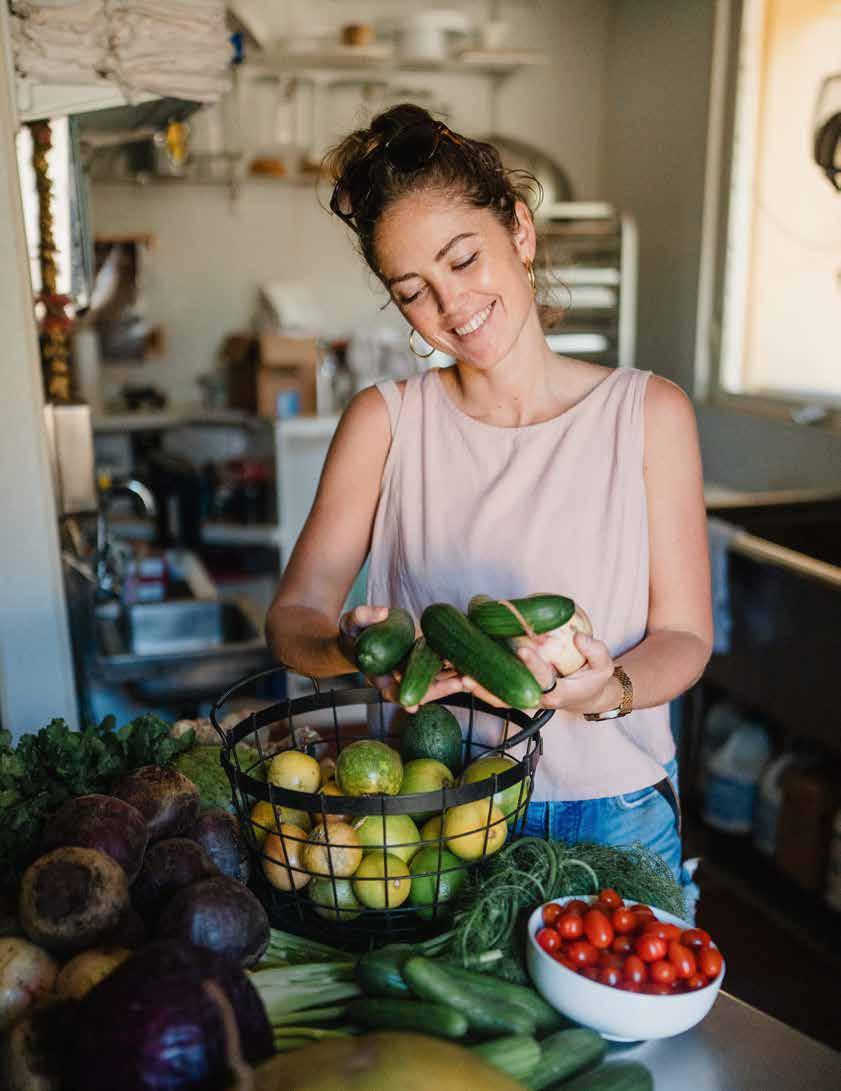


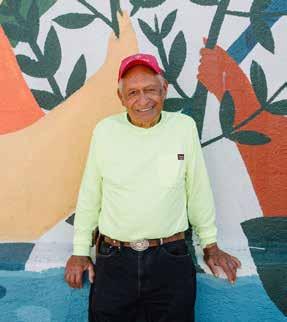
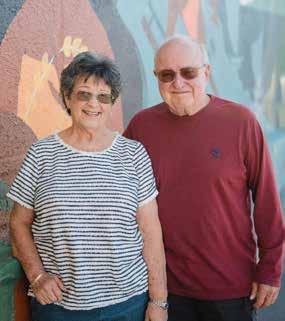
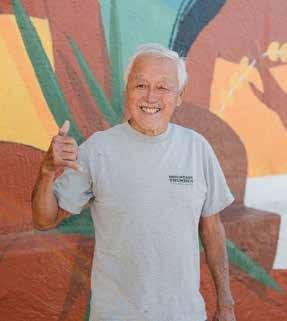
Tired of Waiting Months for Specialty Eye Care?
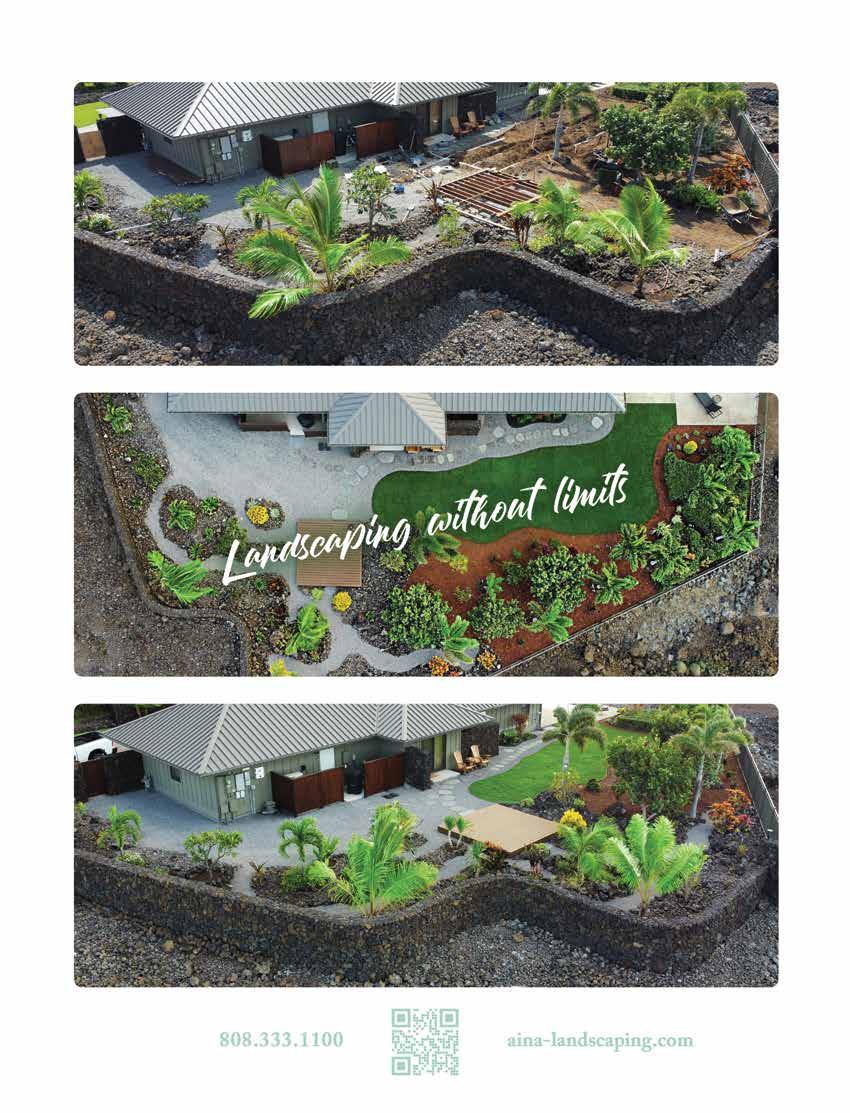

FOOD + BEVERAGE
KONA'S SUSHI JEWEL
LIFE + CULTURE
EATING OUR ROOTS






Tired of Waiting Months for Specialty Eye Care?

Aloha Kona Coast,
October always reminds me that food is never just food. It’s story, connection and heritage. Something that nourishes both our bodies and our sense of place. Here on Hawai‘i Island, every meal carries with it a deeper meaning: where it came from, who grew it and how it ties us to each other and to the land.

This month, we’re proud to feature Jasmine Silverstein of Meals in a HeartBeet on our cover. Jasmine’s journey from growing up on a family homestead in Puna to creating a thriving meal-prep service is both inspiring and deeply rooted in Hawai‘i’s food traditions. For her, food is medicine, creativity and connection. It’s a way to honor the land, support local farmers and nourish families across the island. Her story is a reminder that the meals we share can be both delicious and transformative.
We also dive into the history and evolution of Hawaiian beekeeping through the lens of Leandra Rouse’s documentary. From importing bees into the islands to their vital role today in our coffee farms and food system, the story of bees is also the story of resilience and abundance.
Our restaurant spotlight takes you inside Sushi Sam's, where artistry and craftsmanship meet in every roll. From candid behind-the-scenes moments in the kitchen to the care poured into every dish, this feature captures the beauty of food as both art and experience.
And we celebrate an incredible achievement: Kolby Moser’s Emmy win for her documentary on food and drink in Hawai‘i. Her work elevates our local flavors, traditions and people onto a global stage, showing the world what makes our island culture so unique.
Taken together, these stories remind us of something simple yet profound: when we share food, we share ourselves. Whether it’s sushi with friends, honey drizzled into coffee, or a nourishing meal prepared with care, the flavors of Hawai‘i carry history, resilience and aloha in every bite.
Here’s to savoring the richness of October together.
Warmly,
TAYLOR
October 2025
PUBLISHER
Johnny Gillespie | johnny.gillespie@citylifestyle.com
CO-PUBLISHER
Taylor Stutts | taylor.stutts@citylifestyle.com
EDITOR
John-Mark Dyer | johnmark.dyer@citylifestyle.com
EDITORIAL COORDINATOR
Matias Arredondo | matias.arredondo@citylifestyle.com
PUBLICATION DIRECTOR
Amanda Troyer | amanda.troyer@citylifestyle.com
CONTRIBUTING WRITERS
Nabil Abu-Assal, Leandra Rouse, Tianna Morimoto, Matias Arredondo
CONTRIBUTING PHOTOGRAPHERS
Fletch Photography, Andrew Hara, Aria Studios
CEO Steven Schowengerdt
COO Matthew Perry
CRO Jamie Pentz
VP OF OPERATIONS Janeane Thompson
VP OF SALES Andrew Leaders
AD DESIGNER Rachel Kolich
LAYOUT DESIGNER Kathy Nguyen


QUALITY CONTROL SPECIALIST Megan Cagle Learn

















OCEAN-TO-TABLE • BEACHFRONT • INSPIRED




Kona’s Sushi Jewel
Sushi Sam’s
The Kona Beekeeper Legacy Project
From

Brewed Daily with Sisi Ramirez-Cisneros, Owner of Caffe Florian and proud member of HCFCU.
—Yatzixi “Sisi” Ramirez-Cisneros, Caffe Florian



Committed At Hawaii Community Federal Credit Union, we're proud to support community builders like Sisi Ramirez-Cisneros. Sisi's entrepreneurial spirit and drive to bring people together inspire us, and our continued commitment to the people of Hawaii Island.

To read Sisi's full story, scan the QR code and click on “Summer 2025” Newsletter
At Eyewear Kona and Eyecare Waikoloa, we blend cutting-edge medical optometry with curated eyewear collections and same-day glasses — all with genuine aloha. From treating dry eye and glaucoma to finding your perfect Maui Jim fit, we’re your one-stop destination for healthy vision and stylish living on the Big Island.

Book online or walk in today — let’s help you see (and look) your best.











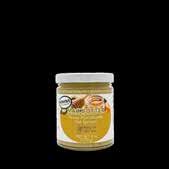



We are a specialty micro-roastery based in the beautiful town of Kailua-Kona on the Island of Hawaiʻi. Although small, what makes up for this is our BIG vision— to elevate Hawaiian coffee and to empower the Hawaiian coffee community. Building relationships with local coffee producers, small businesses and people in general, we hope to pursue great-tasting coffee together. Come and try our hand-crafted drinks. WhiteNeneCoffee.com.
Scan to read more



Nestled on the slopes of the majestic Hualalai volcano, this venue boasts a remarkable combination of natural beauty and island charm. The cool breezes, occasional afternoon rainstorms, and lush 100% Kona Coffee Trees create a serene backdrop that is both refreshing and inspiring. The breathtaking view of the Kona coast adds a touch of enchantment to any gathering. Check our IG @holualoakitchen.
Scan to read more


















Sushi Sam’s Japanese restaurant is a local favorite that tantalizes your palate and comforts your soul
PHOTOGRAPHY BY FLETCH PHOTOGRAPHY

Oishii is a Japanese word that means “delicious” or “tasty.” Sushi Sam’s, one of Kona’s premier sushi restaurants, could appropriately be renamed “Oishii Sushi.”
Since October 2020, Sam Segawa, the namesake and head chef of Sushi Sam’s, has consistently served “the freshest fish imaginable,” according to numerous testimonials from his regular customers. No matter what the fish is, whether it’s tuna, scallops, salmon, or sweet shrimp—in a roll or served as sashimi—it’s all “sea kissed.”


Repeat customers, who have lived most of their lives in sushi enclaves like Los Angeles and New York, told me that his toro, tuna, yellowtail and especially his salmon, rival anything they’ve eaten in big city sushi hangouts. Hardcore sushi enthusiasts rave about his uni and eel, both sea and freshwater.
Several regulars have told me that they sometimes order nothing but Sam’s special sashimi—a variety of fish of the day chosen by Sam—, a bowl of the perfectly cooked sushi rice and a glass (or two) of beer. “Because the fish is utterly delicious, this meal always feels fully satisfying,” says a customer who visits Sushi Sam’s every Friday.
The undisputed quality of Sam’s fish may be the primary draw for his loyal following—about 50% of Sam’s customers are returning Big Island residents. Still it is not the only reason for his success.
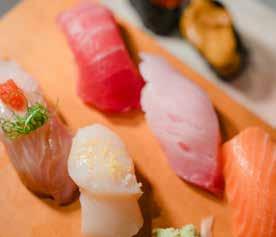
Sam, who formerly worked as a sushi cook at the Kukio Beach Club and the Four Seasons Hotel in Hualalai, says he wanted to create a “warm and inviting” restaurant that was authentically Japanese—he was born and raised in Osaka, Japan. Yet, he also wanted a menu that included all the familiar names of rolls and other dishes that island visitors would see as “comfort food.”
The dish that manifests the fusion between authentic Japanese and contemporary cuisine is the thin-sliced Hamachi appetizer. It is composed of perfectly-sized fish slices swimming in an ocean-colorful—think sea foam greens—ponzu and truffle oil sauce. A small piece of Serrano pepper tops each slice. The flavorful sauce and pepper are the perfect counterpoint to the liveliness of the fish. Nothing overpowers the fish. The sauce is at the service of the Hamachi.
I have seen many customers save the remaining ponzu and truffle oil sauce to use as a substitute for soy sauce when eating their sushi or sashimi. The sauce, by itself, is a taste extravaganza. “Your mouth delights in the utterly unique combinations of color and flavors,” says one adoring customer.
Connoisseurs of Japanese sushi restaurants say you can tell the difference between good and great chefs lies in how well they use vegetables to accent their fish. Two classic examples of this are the Ahi Tataki and the Avocado Bomb.
The Ahi Tataki is lightly seared ahi, drizzled with garlic aioli, served on a bed of shredded white daikon radishes and ponzu sauce. It is difficult to tell which is tastiest: the seared ahi, by itself, the daikon and sauce, by themselves, or all three together. I usually find daikon radishes to be bland, but these daikon radishes, along with the sauce, will open your taste buds to a whole new world of flavors.
“The difference between good and great chefs lies in how well they use vegetables to accent their fish. Two classic examples of this are the Ahi Tataki and the Avocado Bomb.”
The Avocado Bomb has thin slices of avocado interspersed into a mound of spicy ahi sitting on a bed of crunchy tempura. The avocado enhances the fish and vice versa. The crunchy tempura adds a satisfying texture, making this dish a meal unto itself. If you want to see how vegetables can be utterly satisfying standing alone, I highly recommend Sam’s Veggie Roll. Although a Veggie Roll may seem uneventful—avocado, cucumber, carrot, kaiware (radish shoots) and rice—what makes it unique is the addition of Shiso, a Southeast Asian herb from the mint family. The bracing taste of the Shiso leaf transforms ho-hum vegetables into delicacies.

Sam moved to Oʻahu from California because he was a passionate surfer. A surfer knows there’s more to life than fish. Sam wanted to create a Japanese restaurant, not just a sushi one. For those who don’t like raw fish, no matter how fresh, Sam has the answer.
“Occasionally,” says one regular customer, “I go to Sam’s and have nothing but the spinach salad with tangy citrus dressing, the Japanese style potato salad and the rib eye steak—along with a glass of Japanese whiskey. The cozy but minimalist ambiance is the perfect setting for such a meal.”

The ribeye steak, hands down, is one of the best steaks served on the Big Island. It comes sliced on a sizzling, smoking hot plate, with a chunk of butter on top, and a variety of fresh vegetables surrounding the meat. You “finish” the cooking by stirring the butter into the steak and vegetables.
Another notable non-fish dish is the Teriyaki Chicken. Instead of breast meat, Sam uses dark meat, which creates a richer flavor and tenderness with a thicker, more savory sauce than any teriyaki I’ve tasted. Normally, I’m one of those who would never order chicken at any restaurant, let alone a sushi one, but this dish is transformative.
Although Sushi Sam’s does not have cocktails, it does have a highly curated list of Japanese whiskeys, beer, wine and sake. The Japanese whiskeys, four different types, are all worth a try. I personally prefer the KAIYO single 7-year whiskey.
Sam’s prices across the menu are fair, and the portions are generous. Most people spend between $50 and $100 per person and leave as full as they want.
I always leave Sushi Sam’s feeling like I’ve eaten a hearty meal that is as comforting as memories of my own mother’s home-cooking. Crazy to say this about a sushi restaurant, but it’s the truth.
Make reservations at (808) 796-3535, and learn more at SushiSamHawaii.com.

“The Hamachi appetizer is composed of perfectly-sized fish slices swimming in an oceancolorful—think sea foam greens— ponzu and truffle oil sauce.”
U A H A W A I I

74-5606 Pawai Place
Kailua-Kona
Honolulu
Now open in Ala Moana Center (Next to Sephora on the 2nd Floor)


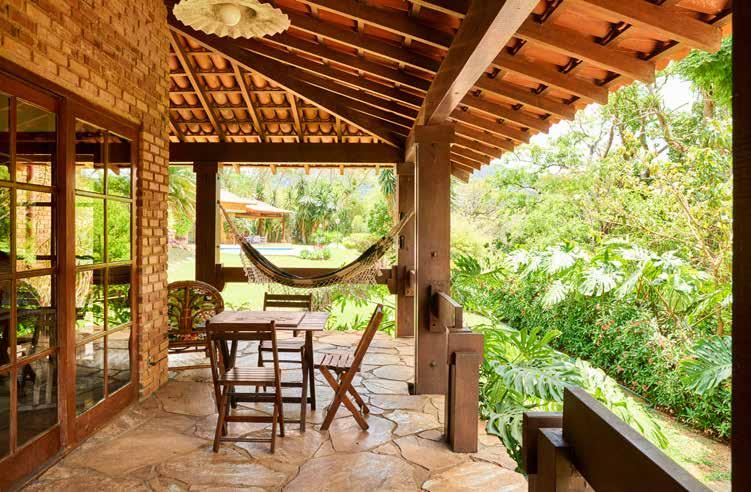


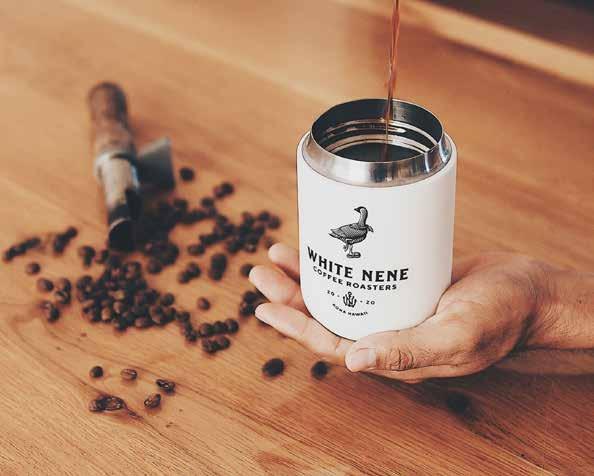

“With queen breeding, you never do the same thing twice.”

There’s a part of Hawaiʻi that most visitors—and even many residents—never see. It lies beyond beaches and busy towns, tucked up rocky mauka roads and behind farm gates. Here, the sun rises on the slopes of Mauna Loa, and the landscape hums with quiet purpose.
These are the working lands of Hawaiʻi Island’s farmers, ranchers and beekeepers—a place where beauty and utility meet, and where a little-known beekeeping community quietly impacts the world.
Leandra Rouse grew up in this world. The daughter of Kona queen breeders, she spent her childhood in these beeyards and felt inspired to capture their story through The Kona Beekeeper Legacy Project—a museum exhibit and documentary. The project began as a birthday tribute to her father, but as Leandra dug into her research, she uncovered a broader community story worth sharing. The story of beekeeping in Hawai’i is one of innovation and kuleana across industries.
For close to a year, Leandra researched Hawaiʻi Island beekeepers, focusing on queen bees. Kona’s mild climate, protected by Mauna Loa, creates ideal conditions for year-round breeding and is a key reason it is home to some of the largest queen breeding operations in the world. Around 25% of the hives in the continental U.S. are run by queens raised in Kona.
In a year when continental beekeepers lost up to 70% of their hives due to colony collapse, Hawaiʻi’s role in global food security has never been more important. Healthy hives are essential not just for honey, but for pollinating crops like almonds, apples and avocados—about one-third of the foods that fill our plates. Hawaiʻi is uniquely positioned to supply the queens needed to rebuild weakened colonies. Queens bred in Kona are shipped across the continent and world, quietly sustaining pollination systems that keep grocery shelves stocked. From this small Pacific corner comes extraordinary influence over what ends up on dinner tables thousands of miles away.
“Beekeepers here depend on landowners, as 90% of their operations run on other people’s land.”

Kona also produces distinctive single-flower organic honeys from vast, unsprayed forests of ʻŌhiʻa, kiawe and Christmas berry. Each reflects Hawaiʻi’s diverse ecosystems—kiawe, smoky and mineral like the lava fields it grows in; ʻŌhiʻa, with herbal sweetness; Christmas berry, bright with a spicy finish. Harvested from remote areas, these honeys are as place-driven as wine.
Another defining feature of Hawaiʻi’s beekeeping culture is the kokua-based relationships between beekeepers and farmers. On the mainland, farmers typically pay beekeepers for pollination. In Hawaiʻi, the exchange is rooted in trust and mutual benefit: farmers gain free pollination, and beekeepers rely on access to farmland. “These relationships are built on history, integrity and mutual support,” Leandra explains. “Beekeepers here depend on landowners, as 90% of their operations run on other people’s land.”
To bring the story to life, Leandra partnered with her friend and renowned nature photographer Andrew Richard Hara to create a vibrant, 10-minute documentary showcasing the beeyards she knew as a child. Filmed over two days in South Kona, the short features beekeepers, ranchers, farmers and scientists discussing the labor, science and joy of working with bees. It’s a visual tour of South Kona coffee farms, ranches and the morning buzz of a beeyard coming alive at sunrise—honeybees and humans both hard at work at their specialized jobs.
Through aerial footage and macro shots inside hives, Hara’s cinematography captures both the big picture and the intricate details. A Hilo native, his work has appeared in National Geographic, NASA and The New York Times—but he always makes time for community-based stories. The documentary can be seen at the traveling exhibit or streamed on PBS Hawaiʻi.
The film also highlights the diverse faces of those who work in this industry—the men and women whose dusty bee trucks travel Hawaiʻi Island’s roads. It brings their dedication and craft into view. Beekeepers in the film speak of “bee fever”—a lifelong fascination with the insects that drives their careers. “With queen breeding, you never do the same thing twice,” says beekeeper JR Gasbar. “If you think you’ve figured it out, you’re wrong—the next hive will be different.”





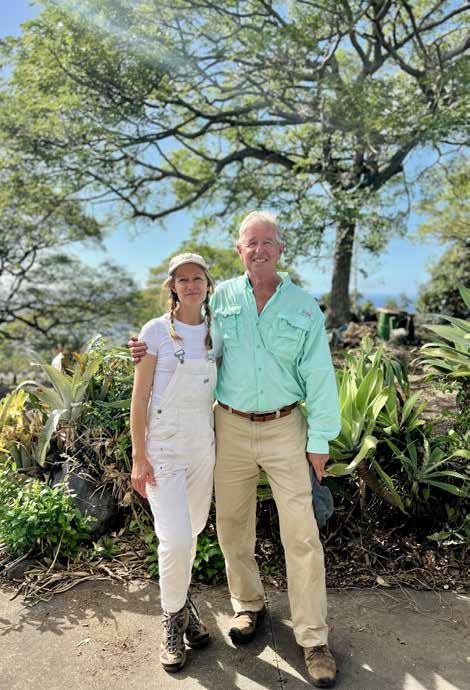
As part of the museum exhibit, Leandra’s research uncovered forgotten Kona stories. One surprising find was a connection to astronaut Ellison Onizuka. The exhibit features a 1900s-era honey extractor that belonged to his great-uncle, which Onizuka used as a boy in a local beekeeping club. Another story is of Enzo Kobayashi & Sons, early honey producers in Kainaliu who supplied honey to Mrs. Teshima for making ʻŌkolehao during Prohibition. These stories are now preserved in the Kona Historical Society archives and are among Leandra’s favorite parts of the project. “It felt so special to piece together and preserve these lost stories for Kona,” she says.
The exhibit recently completed a four-month run at the Kona Historical Society and will reopen in spring 2026 at Anna Ranch Heritage Center in Waimea. The next phase will more deeply explore the tie between ranching and beekeeping—a connection dating back to 1852, when the Royal Hawaiian Agricultural Society offered $10 for the successful introduction of honeybees to support crop pollination for cattle feed.
The Kona Beekeeper Legacy Project is more than an exhibit or a film—it’s a celebration of our agricultural history and impact on U.S. food systems. From the volcanic slopes of Hawai’i Island, our beekeepers continue their quiet global influence.
To learn more, support, or volunteer with the exhibit, visit HistoryOfKonaBeekeeping.com.
As a lifelong resident of Hawai’i Island, deeply rooted in its rich agricultural history, she has always been fascinated by the unsung heroes of our farming ecosystem: the honey bees. Inspired by her parents’ lifelong passion for beekeeping and significant contributions to the industry in Kona, she embarked on a journey to uncover the fascinating story of honeybees in Kona. All in time to celebrate her father’s 75th birthday.
Over the past year, she has documented Kona’s agricultural history by gathering oral histories, producing a 10-minute documentary, and developing an interactive museum exhibit hosted in partnership with the Kona Historical Society.















Kari Clark Investment Advisor Representative



















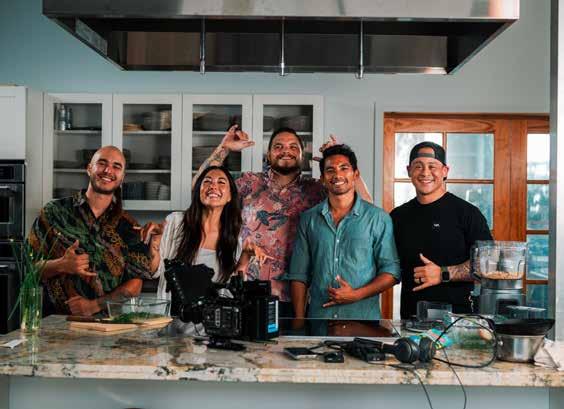
EMMY-WINNING DOCUSERIES SHARES STORIES OF FOOD AND CULTURE ON


For Kolby Moser, the life of a filmmaker has been filled with long days, constant phone calls, and scheduling as she prepares for the production of season two of her award-winning docuseries, “Eating Our Roots.”
The eight-episode series highlights ingredients found on Hawai‘i Island and celebrates the farmers, ranchers and fishermen who grow these foods that nourish the community, as well as raises awareness on the importance of food sustainability.
“My passion is to tell the stories of our people here in Hawai‘i, our culture and the things that we struggle with,” says Kolby.
To bring the docuseries to life, Kolby teamed up with celebrity chef Ippy Aiona. Chef Ippy, who owns Ippy’s Hawaiian BBQ and the Dizzy Pita in Waimea and is a frequent guest on the Food Network, serves as the host, co-producer and writer of “Eating Our Roots.”
In each episode, Chef Ippy engages with a guest or local farmer, learning the history, use and impact of the featured ingredient that is grown or produced in Hawai‘i. He then takes viewers to the kitchen, where he cooks a dish using that specific ingredient.
Season one of “Eating Our Roots” included items like beef, coffee, salt, kalo, ‘ulu and green onion, sharing stories of families who have been working with the food for, oftentimes, generations.

Kolby spends weeks behind the scenes directing and working in pre- and post-production to bring the stories to life.
“We wanted to do something more about the farmers and the people who are producing our food. Farmers, fishermen, butchers, food producers who are feeding us and nourishing us, and making them the stars of the show,” says Kolby.
The first season of “Eating Our Roots” won an Emmy Award for Editor Content - Short or Long Form.
Kolby is most proud of the hard work and sacrifice of her small production team. "Season one was a true passion project. We had one sponsor who got the show on air, but my company absorbed 100% of the costs involved in creating the show,” she says.
Both Kolby and Chef Ippy volunteered endless hours of their time, but their passion for honoring local farmers spread throughout the community.
Kolby shares, “At the end of the season, we put on a dinner to cover some production costs. Everything from the tent to the food, flowers and entertainment was all donated. The community came out in force, and it was a sold-out event—even though it happened during an actual hurricane!"
work never ends. I want them to feel celebrated, but I also want us to be educated as consumers to make smart choices when we're at the farmer's market, or we're at the grocery store.”
Kolby says she’s a “Big Island girl through and through.” She graduated from Ka'ū High School, received a degree from the University of Hawai‘i at Mānoa, and worked as a news producer at KGMB before starting her company, Aria Studios, in 2008. Aria Studios is a team of filmmakers, photographers and creatives who photograph and film documentaries, commercials, weddings and more.
“I hope that the people who are making our food feel like the heroes that they are.”
Season two of “Eating Our Roots” premieres on Oct. 4 on K5 at 8:30 p.m. There will be eight brandnew episodes. All episodes, including season one, are streaming online on HawaiiNewsNow.com, Apple TV, Roku and Amazon Prime.
She adds that this season will cover important issues such as water rights, food sustainability and funding that was cut to the local farmers. Kolby hopes “Eating Our Roots” will encourage the next generation to become farmers. “We wouldn't be able to live and thrive here in Hawaiʻi without them,” she says.
“I hope that the people who are making our food feel like the heroes that they are,” says Kolby. “They deserve all the credit. It is a hard, grueling job to deal with weather, taxes and invasive species; they're up before the sun, and their
Although Kolby and her team have been producing films for nearly two decades, she recently realized the true impact of filmmaking and storytelling, and uses that passion to tell stories of the people of Hawai‘i.
“Our kūpuna were storytellers and filmmaking is our generation’s medium to tell stories. I’ve seen it really impact lives. I've seen it heal and transform lives. It’s a really powerful tool,” says Kolby.
After the COVID-19 pandemic, Kolby says so much was changing, and she began to think about what she wanted her legacy to be and whether her work was making a difference.
In 2022, she created “Hometown Legends”, a documentary that highlighted five kūpuna on Hawai‘i Island who are masters of their craft. “Hometown Legends” was featured in over a dozen film festivals worldwide.
“I think it takes some going out and living life and trying different things [to become a good storyteller]. It’s a big kuleana, a big responsibility, to tell the right stories, the right way,” says Kolby, who is also a mentor for PBS Hawai‘i’s Hiki Nō program. “I hope that we're able to raise up more Hawaiian and local filmmakers because there are a lot of stories to tell about our home. It's a really special place.”
To learn more about Kolby Moser and “Eating Our Roots,” visit AriaStudios.com.






The O2 Lab Hawaii wants to help you to perform at your very best by offering the most advanced hyperbaric oxygen therapy. Let us help you reach your
Healing and recovery with each breath! We consider it an
and
to serve our island community. The O2 Lab Hawaii is the only board-certified hyperbaric oxygen facility on Hawaii Island. We tailor to each person‘s specific needs, through variable pressure and oxygen levels. With over 20 years experience, including serving at the






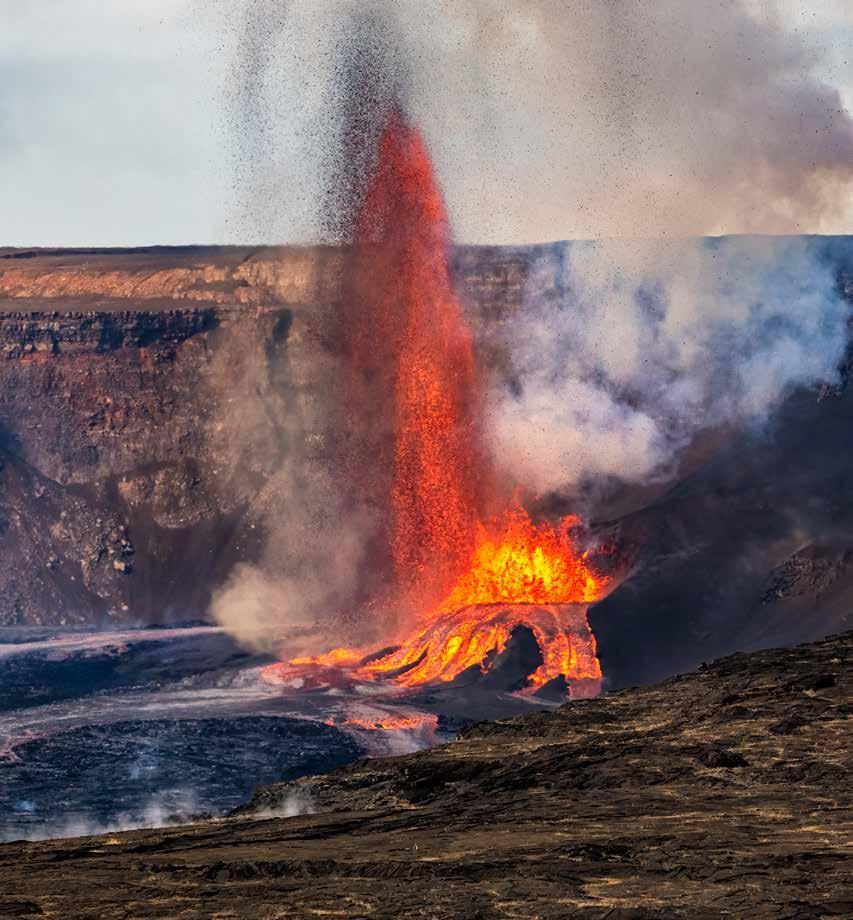
ARTICLE BY MATIAS ARREDONDO
PHOTOGRAPHY BY FLETCH PHOTOGRAPHY


Born and raised on the Big Island, Jasmine Silverstein spent most of her childhood in the rural parts of Puna. She grew up on a small family homestead, where life was deeply tied to the rhythms of the land. Days were filled with harvesting fruit, tending the garden and helping with daily chores that taught her and her four sisters kuleana for the surrounding abundance. That upbringing instilled in Jasmine a sense of place, an appreciation for fresh ingredients and a respect for farmers who work tirelessly to grow the food on the Big Island.
The seed of Jasmine’s passion was planted early. Growing up on her family’s organic farm, she learned firsthand where food comes from, what it takes to grow it and how fresh food can taste when it’s eaten at its peak. “I remember the smell of citrus blossoms in spring, the sticky sweetness of mango season and the satisfaction of watching a field of papaya trees grow from just a seed to a full harvest in front of my eyes,” Jasmine shares.
Her training has been unconventional—rooted in family tradition, curiosity and a love for learning. “As a child, I would watch my mother knead bread, measure ingredients without a recipe and somehow make every meal feel special. I grew up cooking by feel, experimenting with flavors and reading cookbooks the way others read novels. Over time, I became fascinated with global cuisines—how spices, techniques and ingredients tell the story of a place and its people,” she says.
While Jasmine has taken workshops in fermentation and whole-food cooking—and later became a Certified Holistic Health Coach and Certified Master Food Preserver—, most of her culinary education came from hands-on experience, experimentation and a deep respect for ingredients in their purest form.
“In college, while studying Environmental Studies, I began to understand food on a larger scale—how our global food system shapes economies, cultures and ecosystems. One professor’s comment has always stayed with me: ‘We humans interact with our environment in countless ways, but our food system is one of the largest—and it profoundly shapes the way we impact this planet,’” Jasmine recalls.
Later, when she was diagnosed with an autoimmune condition, her connection to food became even more personal. “Coming home to heal, I immersed myself in learning how to use food as medicine. Through years of self-guided study and experimentation, I learned that food could either be a source of inflammation and illness or the foundation for health and vitality. That understanding is now the heartbeat of everything I cook,” Jasmine says.
The result of her journey is Meals in a HeartBeet, an organic meal prep delivery service on the Big Island. Currently offering lunch and dinner options, Meals in a HeartBeet delivers on Mondays to Kona, Kohala, Waimea, and Hilo.
There are two reasons Jasmine chooses to source local produce: flavor and purpose. “Freshly harvested produce simply tastes better and is more nutrient-dense than something that’s traveled thousands of miles. It’s vibrant, alive and inspires creativity in the kitchen,” she says.
“But there’s also a deeper motivation. Hawai’i’s food system is incredibly fragile—over 80% of what we eat is imported. That makes us vulnerable, and it also means local farmers struggle to compete with large-scale mainland and international producers. By sourcing locally, I know I’m helping to strengthen our
“We humans interact with our environment in countless ways, but our food system is one of the largest—and it profoundly shapes the way we impact this planet.”
island’s food security, keep money circulating within our community and preserve some of the agricultural techniques that really care about the land. Every time we choose local, we’re casting a vote for the kind of future we want to see here.”
When thinking about what she enjoys most about cooking, Jasmine recognizes that for her, it’s both a creative process and an act of connection. She loves exploring flavor pairings, testing new techniques and finding ways to make a dish both deeply nourishing and crave-worthy. But she also enjoys knowing the story behind each ingredient—meeting the farmers, walking their land and understanding the care they’ve put into growing their crops or raising their animals.
“When I cook, I’m not just feeding people—I’m weaving together those stories and passing them on in the form of a meal,” she says.
Meals in a HeartBeet sources all its proteins from local farms and ranches Jasmine knows and trusts. Their chickens come from Punachicks Farm in Kea‘au, a family-run operation raising organic, pastured birds. The beef comes from a longtime rancher in Ahualoa who raises grass-fed cattle with care. The seafood is purchased through Kona Seafood Market, which brings in the freshest catch from local waters. This not only ensures quality, but it also supports livelihoods and keeps Hawai’i’s food system more resilient.
Among the produce Jasmine grows in her garden, she says herbs bring meals to life—rosemary, thyme, basil and parsley are some of her favorites. They’re small but mighty in the way they can transform a dish. On the property where her kitchen is currently located, she

also has a fruit orchard. The lemons, limes, oranges and avocados she uses often come straight from the trees just steps away from where she cooks. “There’s something incredibly grounding about stepping out the back door for a handful of herbs or picking a lemon still warm from the sun,” she adds.
If you are wondering about allergy-friendly options, Meals in a HeartBeet has you covered. Their menu is designed to be naturally gluten-free and mostly dairyfree without sacrificing flavor or texture. This meal prep service focuses on whole, nutrient-rich foods that make you forget you’re “avoiding” anything. They also offer an extra protein option on select meals for those who want more protein in their diets.
At the heart of it, Meals in a HeartBeet is about more than just food—it’s about connection. Connection to our health, to the land, to the people who grow our food and to each other. Every dish carries that intention. “I hope is that when someone eats one of our meals, they feel cared for, nourished, and inspired to think about where their food comes from,” Jasmine says.
Looking forward, Meals in a HeartBeet is about to take a big step—moving to Kona! “Our new space will serve as both a meal pickup location and a graband-go shop for healthy snacks, drinks, and ready-toeat meals. It’s something I’ve dreamed of for years—a place where people can drop by for something nourishing, connect with our team and feel a part of our food community. Pop in and say hello! 75-5699 Kopiko Street, next to The Club.”
Learn more at Order.HeartBeetFoods.com and follow at @meals_in_a_heartbeet
“When I cook, I’m not just feeding people—I’m weaving together those stories and passing them on in the form of a meal.”

